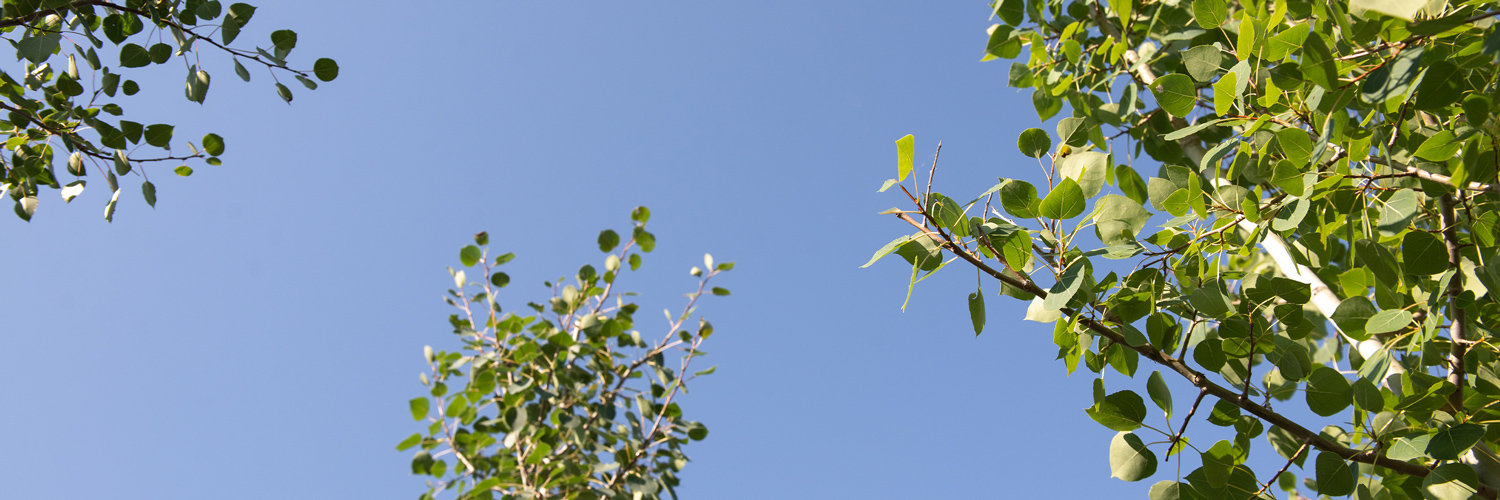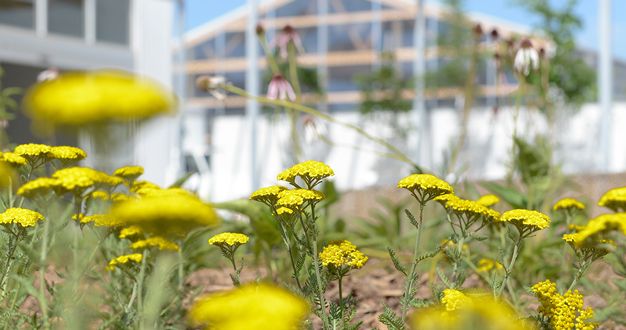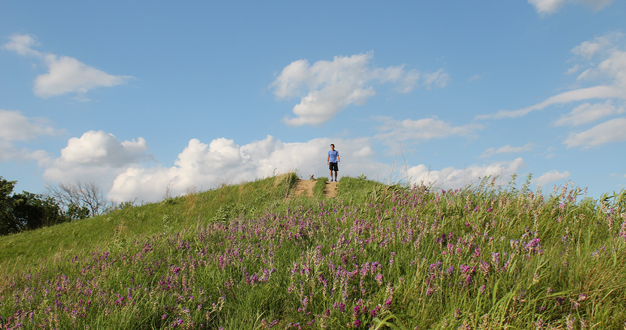
Few trees are as memorable as the quaking aspen. One trip to the mountains in Colorado is often enough to inspire an entire landscape at home. Our geography and climate may be very different than at higher altitudes, but aspen is surprisingly adaptable, and we can enjoy its unique texture, color, and characteristic foliage in the Great Plains too. Here we share what makes quaking aspen such a distinctive tree both in its native community and in our urban landscapes. And we introduce you to an aspen cultivar that’s truly a homegrown original.
North America’s Tree
Quaking aspen, Populus tremuloides, holds the distinction of being the most widely distributed tree species in North America. You can find quaking aspen from Alaska south to Mexico and California, throughout the entire western and northern United States. Quaking aspen grows in a variety of elevations, habitats, and soil types, but it’s perhaps best known for its presence in mountain forests dominated by evergreens. There, quaking aspen’s glowing white bark, its whimsical dancing foliage, and that breathtaking golden fall color make it a standout.
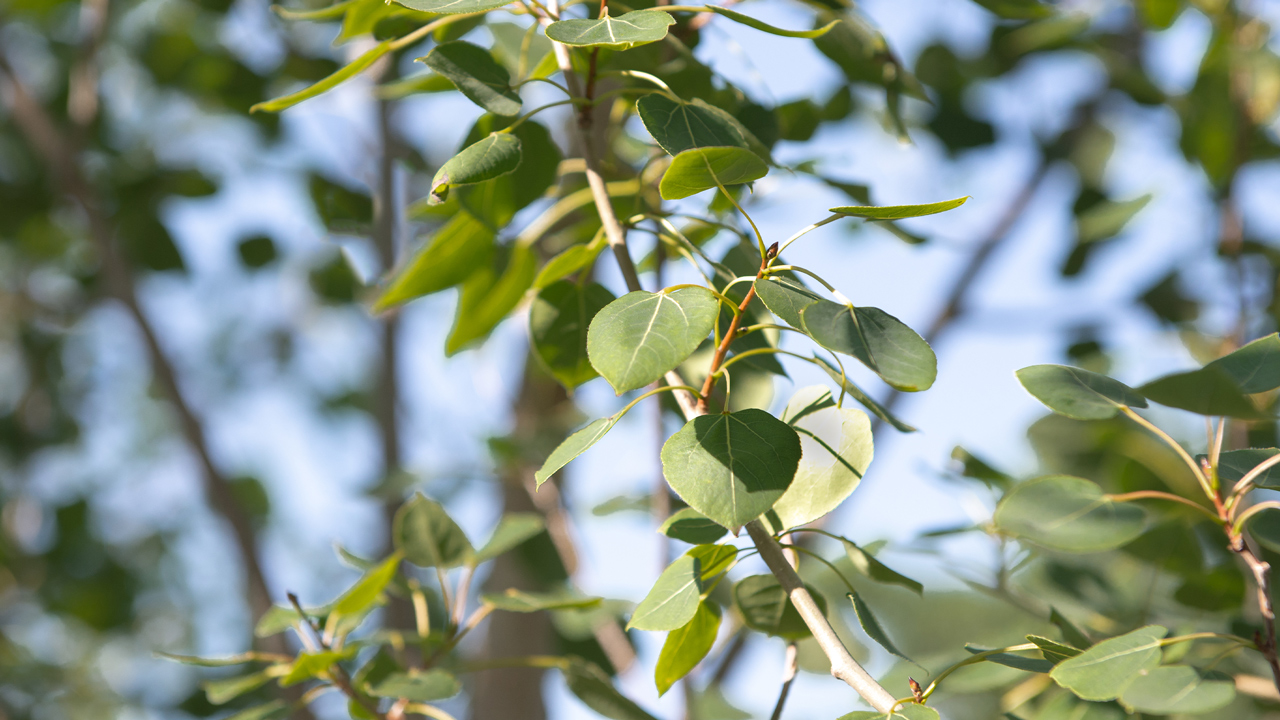
Its Value to an Ecosystem
In the wild, quaking aspen is a valuable resource for both the local wildlife community and the surrounding habitat. A variety of large and small mammals, birds, and insects use its buds, twigs, bark, and fallen leaves for food and shelter. In the mountains, quaking aspen’s extensive root system makes it better at preventing soil erosion and recharging the ground water supply than its evergreen neighbors. And quaking aspen trees are also good firebreaks. According to the USDA, a destructive crown fire will often drop quickly to the ground – sometimes even go out completely – when it reaches a grove of aspen.
An Impressive Tree for Any Landscape
In cultivation, quaking aspen grows to about 40’ tall – adding beautiful texture, color, and movement that stands apart from other trees. The trunk is smooth and slender and almost perfectly cylindrical with random black patches appearing here and there along the entire length. The glossy green leaves are a pointed oval to nearly round and dangle from flattened petioles that allow each leaf to twist and flutter in every gentle breeze – the whole shimmery effect is mesmerizing. And the constant movement creates a tranquil whisper that peacefully deflects all those intrusive sounds of the city.
In a landscape, quaking aspen looks most at home in a natural design – maybe planted in informal groups and surrounded with mountain-inspired elements like boulders, wild roses, ferns, and forest wildflowers. But quaking aspen’s simple green and white summer color scheme and its cylindrical trunk make it an interesting component of more contemporary designs too. Aspen is a fast grower too – you won’t wait long to see its full potential in your landscape.
And that golden fall color – whether in a formal or informal setting – glows like a final pop of warm sunshine before winter arrives.
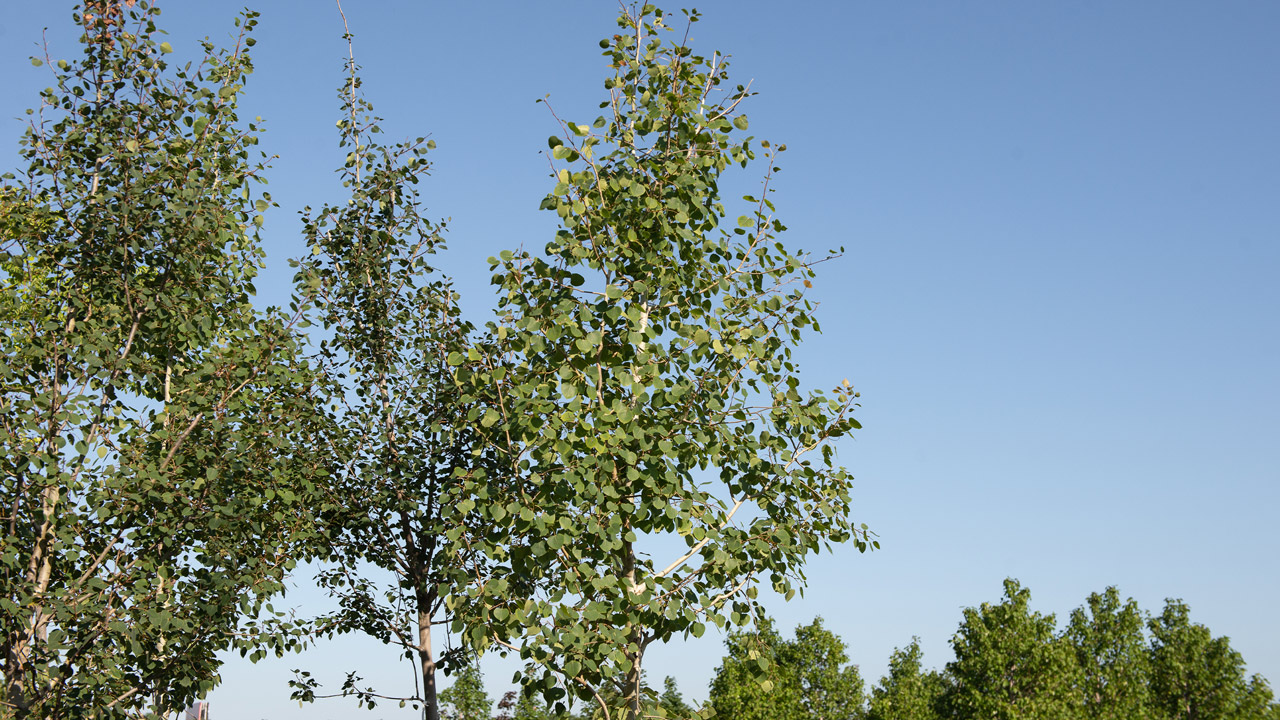
Prairie Gold® – Our Own Nebraska Cultivar
Although in our minds we might associate aspens more closely with the mountains than with prairies, there is one variety of quaking aspen that calls Nebraska its native home. This variety was discovered in the 1970’s on a property south of Leigh, Nebraska and named P. tremuloides ‘NE Arb,’ or Prairie Gold® aspen. A true Nebraska native, Prairie Gold® is adapted to the extremes of a Great Plains growing season – including all the heat, drought, and humidity that comes with it.
Find the Perfect One
In our Nursery Yard collection, you’ll find both the straight species of quaking aspen and the Nebraska native cultivar Prairie Gold®. Stop in to see us, so we can help you find the perfect one for your landscape. And if there’s more you want to know about this beautiful tree, just ask – we’re always glad to help.

